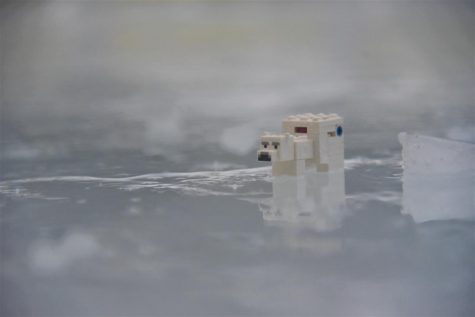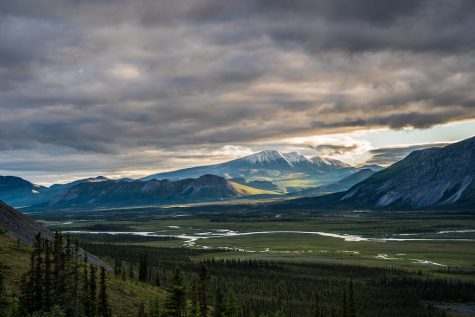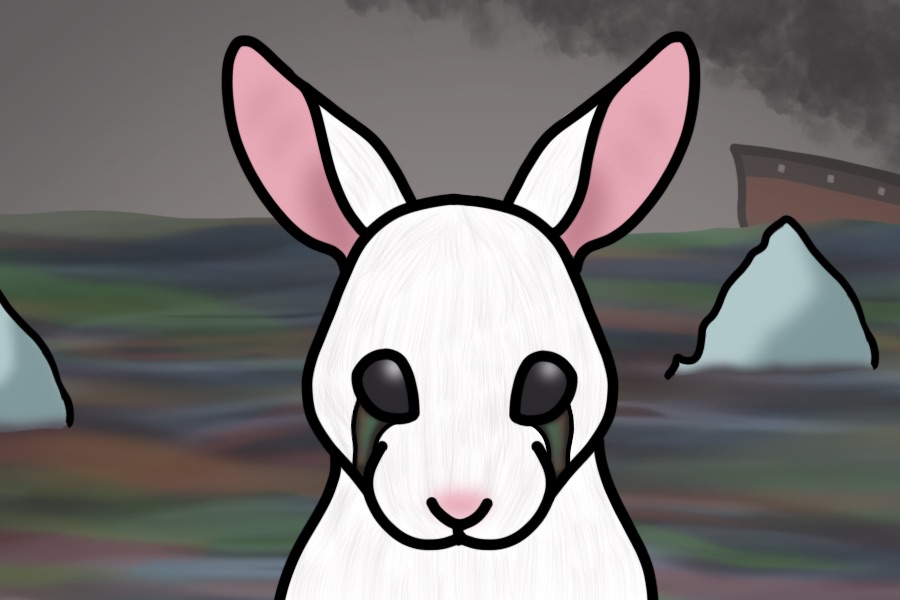#SaveTheArctic: The social media storm
Social media is one of the best platforms to spread everything from memes to brand awareness, but recently it has been giving momentum to important causes such as the Save the Arctic movement.
#SavetheArctic may have originated as a social media hashtag, but the movement it’s sprung has made a larger impact than anyone could’ve anticipated.
Pleas to save the Arctic have been around for well over a decade. From playing piano while floating in the Arctic Ocean to hanging off of a bridge to delay an oil icebreaker, ardent Save the Arctic supporters never cease to find ways to combat the exploitation of the Alaskan coast. The protection of the Arctic National Wildlife Refuge has been a topic of intense political debate for the past several years, but it may finally be making progress. According to a Greenpeace survey, vast amounts of support on today’s social media platforms and the internet have caused this movement to gain a following of over 70 percent of the American population. And now, the protection of this sacred land is in the hands of the public.
The Save the Arctic movement is a Greenpeace campaign to protect the Arctic National Wildlife Refuge from harmful energy development. This battle has been going on for nearly 36 years, with bills to open or defend the coast appearing in every Congress since 1986. This 19.6 million-acre refuge is home to over four million people along with nearly 300 species of animals. It is the last five percent of Alaska’s northern coast that hasn’t been affected by oil exploration. Since 2017, however, 1.5 million acres of its coastal plain are in danger of being bought for drilling. Such exploration of the 1002 area would do much more than simply collect gas.

Although drilling could open up new jobs and potentially add to an oil-dependent nation’s revenue, the development would do more harm than good. The cost of drilling would be twice as expensive as selling the resource and destroy one of the last remaining untouched ecosystems.
Drilling in the wildlife refuge would have catastrophic impacts on climate change. The refuge acts as a carbon reserve by freezing large amounts of carbon in the ground. Drilling could release around 4.3 billion metric tons of carbon dioxide into the atmosphere, more than doubling the U.S.’ annual greenhouse emissions. The residual melting of sea ice and permafrost will allow for more shipping routes, only producing more emissions. Most importantly, the rate the Arctic is currently warming at, over twice the global rate, would continue to rise. This will affect not only the climate in Alaska but the entire globe.
This isn’t solely an issue of climate change, but also a fight for human rights.
The Gwich’in people have lived on the refuge for thousands of years and have built a spiritual connection to the land and wildlife. They believe they and the caribou are connected and will sustain each other forever. That is if they make it that long.
With these vibrant communities at risk, the Gwich’in people have to fight to protect their way of life. The Gwich’in created the Steering Committee in 1988 to face threats of oil leasing in the coastal plain. This committee informs the public and decision-makers on why these sacred grounds should be protected.

Caribou are the basis of life for the tribes, but with the danger facing the population, their source of food, skin, and materials for tools is depleting. Since 2010, the porcupine caribou population has been growing three to four percent annually and hit a record high of 218,000 in 2018. However, the 1002 zone holds the calving ground for the porcupine caribou. By destroying that land, it threatens their existence.
Caribou are far from the only animals that would be put at risk. Various bird species and likely the last remaining Southern Beaufort Sea polar bears could also drastically decrease. Polar bears all over the world are in danger of going extinct but are particularly threatened in the United States.
Melting ice forces polar bears to hunt on land, leaving them at risk of starvation. Oil spills could be lethal to the bears. Contact with oil prevents their fur from keeping them warm and poisons the animals. The Refuge is the only national conservation area that polar bears rely on to consistently den. Drilling in this area would be most harmful towards the denning bears and their cubs. During exploration, dens could be completely destroyed and drive off bears, leaving them vulnerable. The already rapidly declining population would grow closer to extinction.
Due to concerns about caribou and other wildlife, the Bureau of Land Management removed about 500,000 acres from the sale in December. That left about a million acres up for bid. The lease sale ended an “epic failure” according to a statement from an executive director of the Alaska Wilderness League. At the sale for ten-year rights to exploration, only eleven of the twenty-two plots were bid on, amounting to only one percent of predicted profit. All but two of these were bought by the state of Alaska. The remaining two by two small non-oil producing companies.
With the coronavirus pandemic, rallies and protests for climate change haven’t been as common, but the public still finds ways to make their voices heard.
Social media has been the most notable way news about the Arctic Refuge has been mass spread. On TikTok alone, hashtags boosting Save The Arctic have well over 25 million views, with Instagram housing over fifty thousand informational posts. All of this publicity has gained huge numbers of supporters. Allies of the cause have been sending letters to the Fish and Wildlife Service to attempt to sway the decision of moving forward with exploration.
After over six million letters were signed before the public comment period ended on Jan. 6, 2021, supporters were then encouraged to urge the Biden administration to take action. On Jan. 21, President Biden signed an executive order to pause oil and gas development in the wildlife refuge. This is just a temporary win for supporters, who are still pushing for the permanent protection of the land.
Currently, new letters are being sent to the Biden administration to ask for the permanent preservation of this last piece of pure wildlife.
This isn’t the first time environmentalists have spoken out against threats to wildlife, nor will it be the last. The Standing Rock Sioux Tribe fought for years against the Dakota Access Pipeline polluting their land. Millions of students all over the world went on strike for the Fridays For Future movement starting in 2018. And thousands of social media accounts advocate for preserving the land we have. Activists claim that this planet is one worth fighting for, and that we don’t have the luxury of getting a second one.
Find more information about Save the Arctic at websites like ProtectTheArctic.org and SaveTheArctic.org.
Your donation will support the student journalists of West High School. Your contribution will allow us to purchase Scholarship Yearbooks, newsroom equipment and cover our annual website hosting costs.

(she/her) Alaina Greenlee is a senior at West and is in her second year as the WSS Video Editor. Between creating half-decent videos and being below average...

Emma Hall is a senior at West and this is her third year on staff as an artist for online staff. in her free time she likes to draw, read, and play video...




Mia Aranda • Feb 1, 2021 at 11:18 pm
Love love love the artwork! The artist is truly so talented. Their style has me in awe!